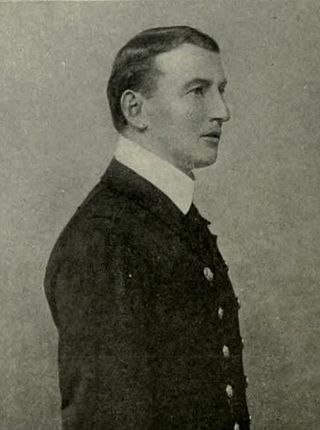
The Admiralty was a department of the Government of the United Kingdom responsible for the command of the Royal Navy until 1964, historically under its titular head, the Lord High Admiral – one of the Great Officers of State. For much of its history, from the early 18th century until its abolition, the role of the Lord High Admiral was almost invariably put "in commission" and exercised by the Lords Commissioner of the Admiralty, who sat on the governing Board of Admiralty, rather than by a single person. The Admiralty was replaced by the Admiralty Board in 1964, as part of the reforms that created the Ministry of Defence and its Navy Department.

The Air Ministry was a department of the Government of the United Kingdom with the responsibility of managing the affairs of the Royal Air Force, that existed from 1918 to 1964. It was under the political authority of the Secretary of State for Air.

The Fleet Air Arm (FAA) is one of the five fighting arms of the Royal Navy and is responsible for the delivery of naval air power both from land and at sea. The Fleet Air Arm operates the F-35 Lightning II for maritime strike, the AW159 Wildcat and AW101 Merlin for commando and anti-submarine warfare.

The Royal Naval Air Service (RNAS) was the air arm of the Royal Navy, under the direction of the Admiralty's Air Department, and existed formally from 1 July 1914 to 1 April 1918, when it was merged with the British Army's Royal Flying Corps to form the Royal Air Force (RAF), the world's first independent air force.

The Sopwith T.1 Cuckoo was a British biplane torpedo bomber used by the Royal Naval Air Service (RNAS), and its successor organization, the Royal Air Force (RAF). The T.1 was the first landplane specifically designed for carrier operations, but it was completed too late for service in the First World War. After the Armistice, the T.1 was named the Cuckoo.
The AD Seaplane Type 1000 also known as the Admiralty Type 1000 and the AD.1 was a British seaplane of the First World War designed to attack German warships. When it first flew, it was the largest British aircraft yet to take to the air.

Naval aviation is the application of military air power by navies, whether from warships that embark aircraft, or land bases.

The Fifth Sea Lord was formerly one of the Naval Lords and members of the Board of Admiralty that controlled the Royal Navy. The post's incumbent had responsibility for naval aviation.
Air Vice Marshal Sir Oliver Swann, was a British military commander who was a leading figure in the Royal Naval Air Service and senior commander in the Royal Air Force during the first half of the 20th century.

Rear-Admiral Sir Murray Fraser Sueter was a Royal Naval officer who was noted as a pioneer of naval aviation and later became a Member of Parliament (MP).

Lieutenant Colonel John Cyril Porte, was a British flying boat pioneer associated with the First World War Seaplane Experimental Station at Felixstowe.
The Sopwith Admiralty Type 807 was a 1910s British biplane seaplane designed and built for the Admiralty by the Sopwith Aviation Company.
The air commanders of World War I were army or navy officers who came to command air services during the first major conflict in which air power played a significant role.
The Sopwith Gunbus was a British fighter aircraft of the First World War. It was a single-engined pusher biplane based on a floatplane built by Sopwith before the war for Greece. Small numbers were built and used by the British Royal Naval Air Service, mainly as a trainer.
RAF Coastal Area was a formation within the Royal Air Force (RAF). Founded in 1919, it was to act as the RAF's premier maritime arm. It was replaced by RAF Coastal Command on 14 July 1936.

The convoy—a group of merchantmen or troopships traveling together with a naval escort—was revived during World War I (1914–18), after having been discarded at the start of the Age of Steam. Although convoys were used by the Royal Navy in 1914 to escort troopships from the Dominions, and in 1915 by both it and the French Navy to cover their own troop movements for overseas service, they were not systematically employed by any belligerent navy until 1916. The Royal Navy was the major user and developer of the modern convoy system, and regular transoceanic convoying began in June 1917. They made heavy use of aircraft for escorts, especially in coastal waters, an obvious departure from the convoy practices of the Age of Sail.
Neville Usborne was a British naval officer who played a prominent part in British military lighter-than-air aviation before the First World War. He was involved with the construction of the first British rigid airship HMA No. 1 and was killed in one of the first experiments in launching an aeroplane from an airship.

The Assistant Chief of the Naval Staff formerly the Assistant Chief of the Naval Staff is a senior Royal Navy appointment responsible for naval aviation. The post is also the successor to the Royal Navy's Flag Officer for naval aviation in the British Isles, established since 1939.

The Department of the Director of Naval Equipment also known as the Directorate of Naval Equipment was the former British Admiralty department responsible for managing the progress of all naval construction at royal naval dockyards, and annually planning programmes of works for additions, alterations, repairs and modernisation established in 1912 until 1960 when it was replaced by the Naval Equipment Division of the Ship Department.










